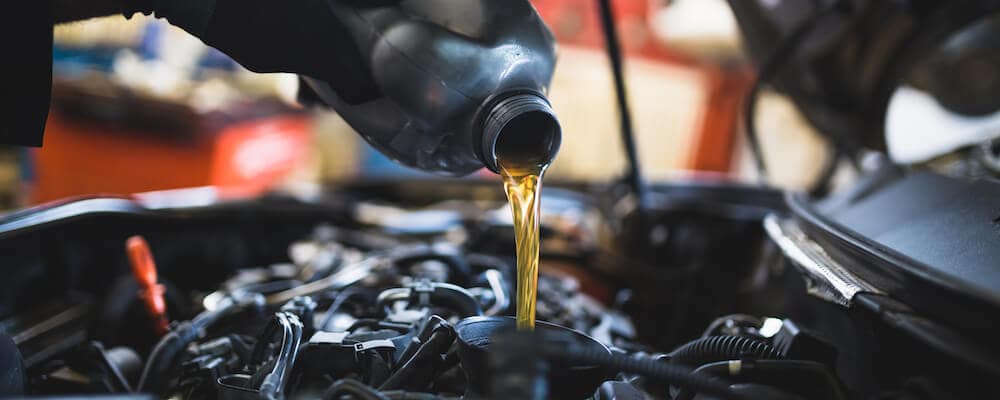
We always encounter various issues when driving the car. Car rattles are the most unbearable problem for drivers. These noises cannot be avoided in the running of the vehicle. They can occur at any time. Engine rattles are not limited by new or old cars and are not limited by mileage. Now let's see how to improve this awful symptom.
2. Preventive inspection and maintenance
The car engine is the device that provides power to the car. It is the heart of the vehicle and affects the power, fuel economy and environmental friendliness.
The EFI engine uses a variety of sensors to receive data and information. After complex calculations, the pre-set computer chip sends operating instructions to the various actuators, which ultimately control the engine's operation.
Drivers need to keep good driving habits properly. Frequent and timely maintenance is essential. Daily care is more important than repair. We ought to pay attention to it.
1.1 Avoid low-lying waterlogged roads
After a rainstorm, there is often water on the road. Do not drive too fast. We should avoid severe damage to the engine. Once the engine inhales water, the combustion chamber is filled with water. The high-speed rotation of the crankshaft connecting rod is lifted.
However, water is a non-compressible body. The tremendous inertial force will damage the rod. The high-temperature cylinder block suddenly encounters cold water. It is also easy to cause the block to crack.

If the water flows into the electronic control device in the engine, it will form a short circuit, causing damage to the components and even the computer. You don't want to meet this tragedy. Therefore, in case of heavy rain, you'd better wait patiently.
It is best to drive the car to higher ground and wait for the water to recede before leaving. Do not try to get lucky from rushing into the water.
1.2 Refuel in time
There is an electric fuel transfer pump in the fuel tank. It is responsible for transferring fuel to the engine. The motor gets hot when it works. And when it sinks in the fuel, the heat is cooled by the surrounding fuel, and it can run for a long time.
But when the fuel in the tank is seriously insufficient, the fuel pump is exposed to the air. The motor temperature gradually increases. It is easy to burn out the motor. Therefore, when the fuel gauge pointer reaches the warning area, you should pump fuel in time.
1.3 Starter shouldn't work too often in the short term
Sometimes, the engine does not ignite for some reason. The driver will usually start frequently. In fact, the starter consumes a lot of power, typically several hundred watts. As a result, the electrical energy reserves in the battery are seriously depleted.
If the engine doesn't get to work, there is no electrical energy to replenish. The battery is very easy to be damaged.So if you can't start the car after a few ignitions, you should check the cause properly and resolve the issue before starting it.
2. Preventive inspection and maintenance
2.1 Learn more about vehicles
Many people like to repair or modify their own cars in their spare time. Of course, they also do some small creations and inventions. It is convenient to buy spare parts anyway.
People who drive a lot have a good understanding of the structure and performance of the car. They are also familiar with the knowledge of car maintenance.
2.2 Inspection, addition and replacement of oil
Oil has particular significance for the engine because cars' engine speed has now reached six or seven thousand revolutions per minute. It even comes ten thousand revolutions in racing cars. The linear velocity of the piston movement is as high as several tens of meters. The process is carried out at high temperatures and pressure.
Without a compatible premium oil as a lubricant, the engine will soon be damaged. Since oil will partially evaporate at high temperatures, check the oil level frequently through the oil dipstick and add it in time when it is insufficient.

However, it should be noted that the newly added oil must be the same type. Otherwise, if two different chemical compositions of motor oil are mixed, it will produce a chemical reaction and make the oil performance become bad.
The choice of oil depends on the local temperature conditions, so I won't go into details here.
When the engine works at high speed, some metal chips and impurities will often fall down. The oil will deteriorate with long-term use. So it is necessary to replace it in time. Various cars have clearly defined the time of oil replacement. Generally, it is after 1000 to 1500 km.
In the daily inspection, if you find that the oil has thickened and become black, it means that the oil has deteriorated and needs to be replaced in time. In areas with large temperature differences, when summer and winter come, you need to replace the corresponding grade of oil.
With the development of science and technology, oils that can adapt to a wide range of temperature differences have been developed, so that the replacement has been omitted.
In recent years some companies have continued to introduce a variety of oil additives. They can significantly improve the performance of the engine oil, thereby extending the engine's life and reducing emissions. It is very beneficial to the general engine and worth promoting for use.
However, it should also be noted that for some expensive cars, workers have added special preparation of additives in the oil. The manual will clearly point out that they are not allowed to add other additives. Otherwise, there will be counterproductive effects.
3.1 Use reliable quality fuel
This is especially important for EFI engines because the temperature in the EFI channel may reach more than 200 degrees, which makes the injection nozzle, valve stem and intake valve extremely easy to form carbon deposits.
The symptom leads to poor valve closing and cylinder pressure drop, resulting in cold sticking of the valve and blockage of the nozzle oil passage.
Fuel additives include anti-explosive agents, anti-wear agents, combustion aids, cleaning and dispersing agents, etc. It can effectively remove carbon deposits from the fuel system, improve fuel combustion rate, and reduce exhaust pollution.
It is not a big problem if you are just using high-grade gasoline in a big city. But if you take your car to a small or medium-sized town to fill up, it's best to add a reliable bottle of fuel additive.
3.2 Regular cleaning of oil system
Although many cars use fuel additives, they still produce carbon deposits. So it is essential to thoroughly clean the fuel system after running for every 20000 to 25000 km. Nowadays, more formal auto repair shops are equipped with fuel cleaning equipment without disassembly.

To put it simply, connect it with the oil circuit. Input a specific chemical cleaning agent and idle the engine for a period of time. The cleaning agent will be able to decompose the carbon, emulsify and dissolve the gum and oil. The impurity will be discharged through combustion.
4.1 Clean air filter element regularly
It is best to remove the air filter element and use compressed air to blow the dust and other dirt from the inside out after driving for every thousand km. Some cars have a dust integration cup at the air inlet, which should also be checked frequently.
There are three filters: fuel, oil and air. The oil filter generally has two coarse filters and two fine filters, which should be replaced when the car is in its second warranty. The time of cleaning and replacement is different in different areas and driving conditions.
4.2 Check and replenish coolant
Coolant in the reservoir should be supplemented with the same variety of coolant if lower than the minimum level. If necessary, distilled water can be used instead.
Here is a thing, be sure to wait for the temperature to drop before opening the cover. Otherwise, the high-temperature water sprayed out is dangerous.
4.3 Adjusting valve clearance
After driving for a period of time, sometimes you will hear the sound of "Ta, Ta" in the engine. The reason is that the clearance between the valve and valve tappet becomes large. At this time, you have to adjust the clearance.
However, modern car engines use hydraulic tappets, which can automatically eliminate the gap. The problem is naturally solved.
4.4 Inspection and cleaning of platinum contacts
Platinum contacts on the distributor will have ablation after a period of time. It will cause increased resistance, declined ignition energy in spark plugs. As a result, the engine output is reduced, which should be gently polished off with fine sandpaper to that layer of oxide.
On the other hand, we should pay attention to the contact area. It should not be less than 80%. Otherwise, it should be replaced.
4.5 Check Spark plugs frequently
If you find that the engine power has decreased, one of the possible reasons is that the spark plug needs to be overhauled. First of all, check whether the ceramic body is broken. If there is something wrong, replace it in time.
Secondly, check whether the gap between the two electrodes of the spark plug is good. The standard value is generally between 0.4 to 0.6 mm (the gap is different for different brands).
The best way to check the gap size is to use a thickness gauge. But if you are experienced, you can also use a visual inspection or remove the spark plug next to it for comparison. The electrodes should be kept clean and clear of carbon deposits and oxide layers on them.
4.6 Keep ventilation valve open
The engine, transmission and some other assemblies have venting valves to facilitate oil and gas drainage at high temperatures. It is important to remove dirt and dust frequently to keep the ventilation. When washing the car, pay attention to the valve cover. Don't let the water in.
 Lauritz Carolsfeld
Lauritz Carolsfeld  December 03, 2021
December 03, 2021
